实例介绍
【实例截图】

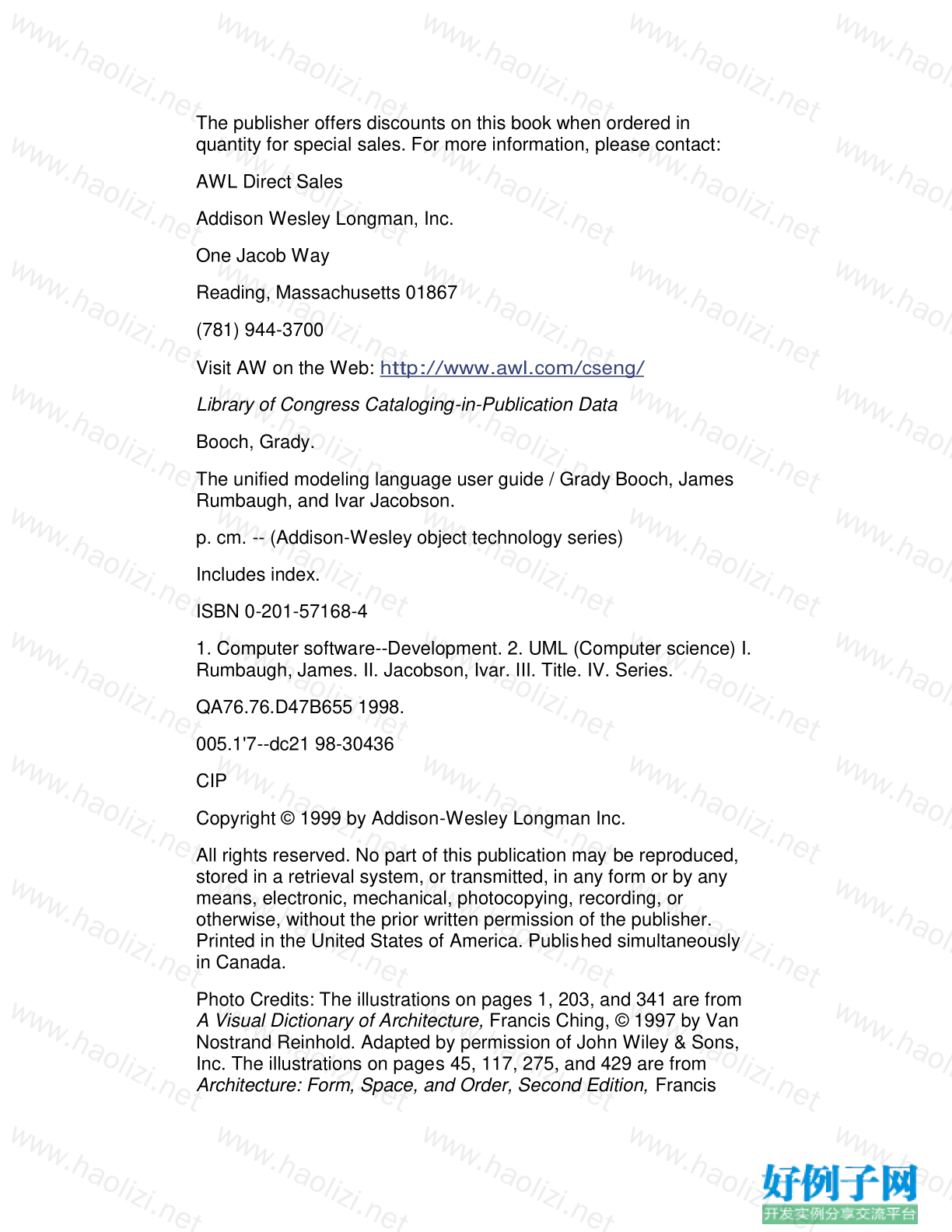
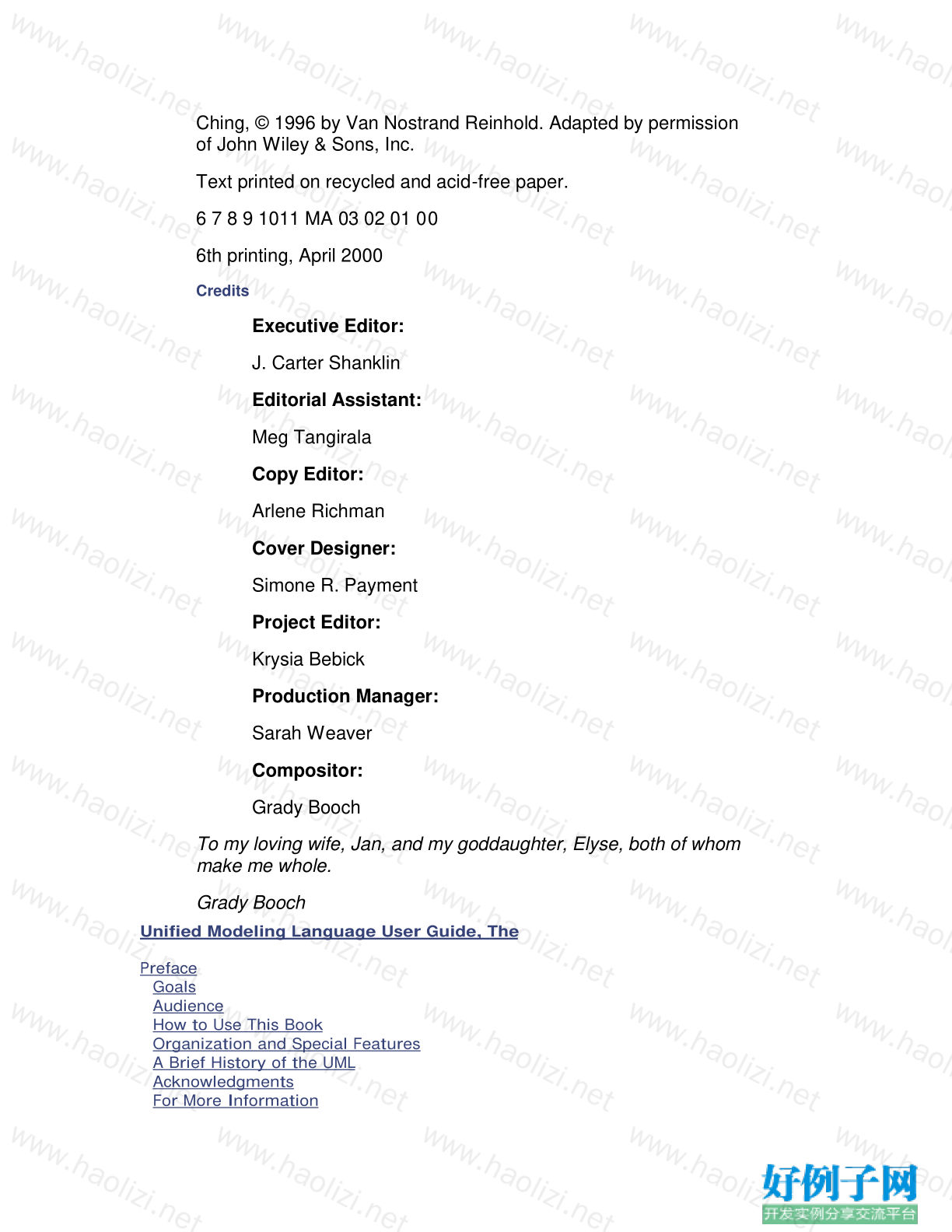
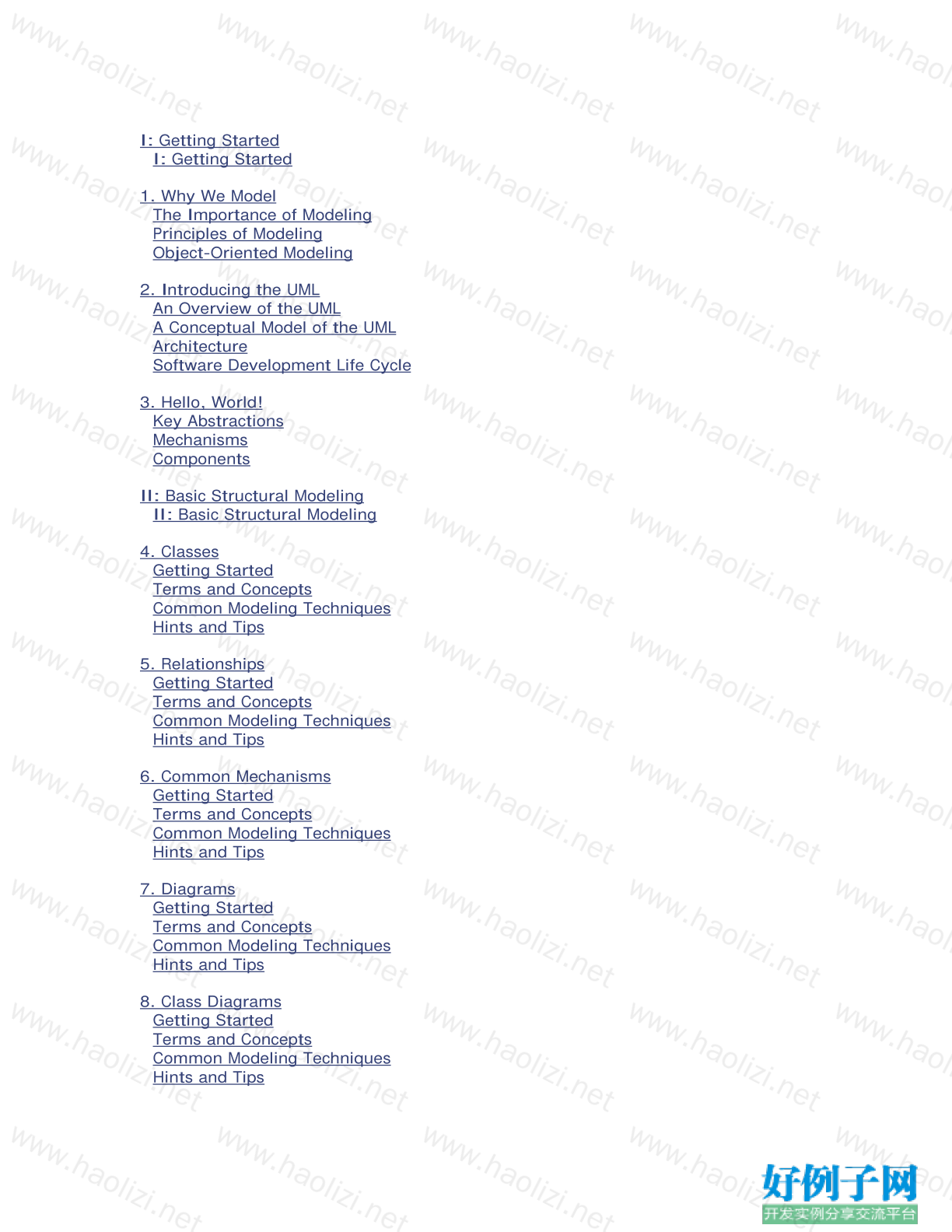

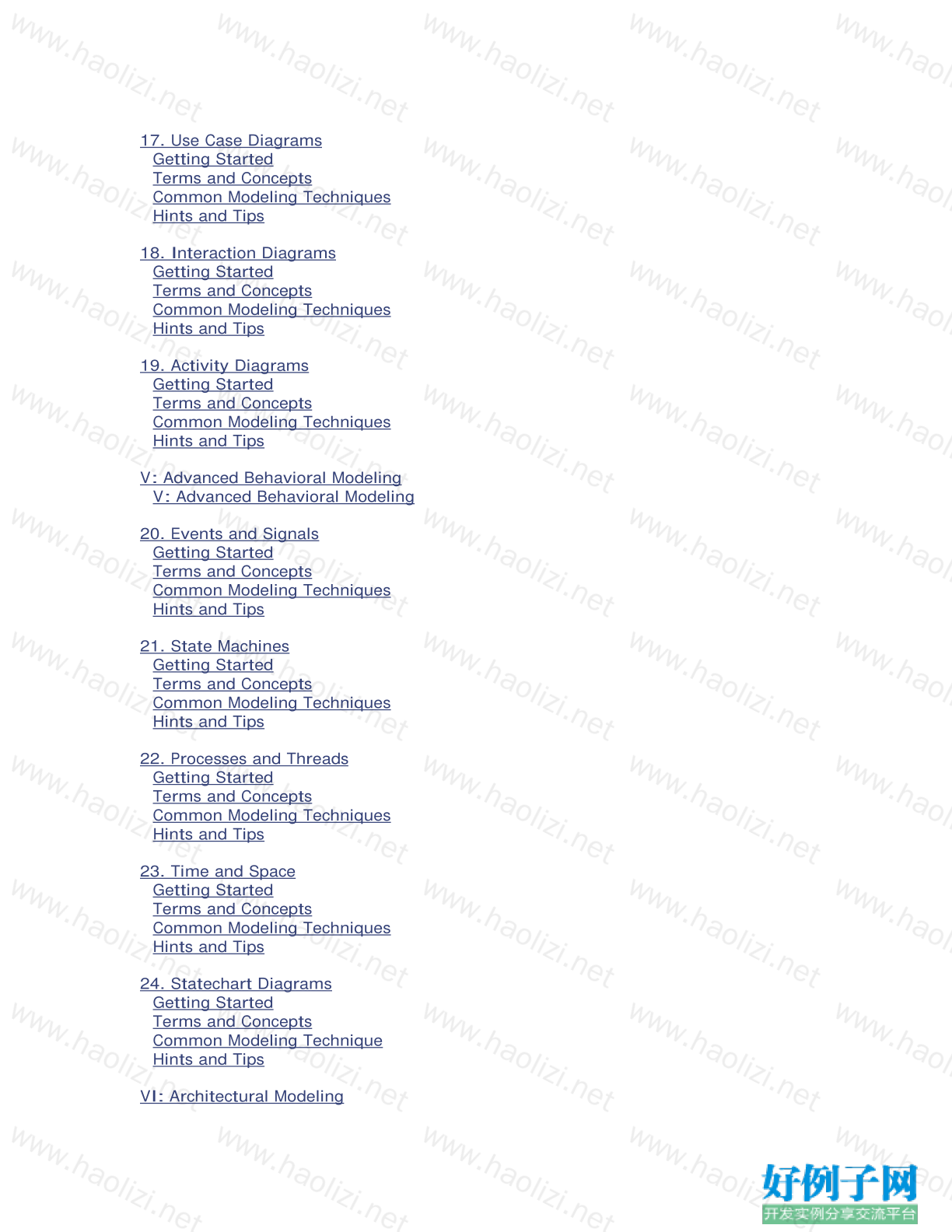
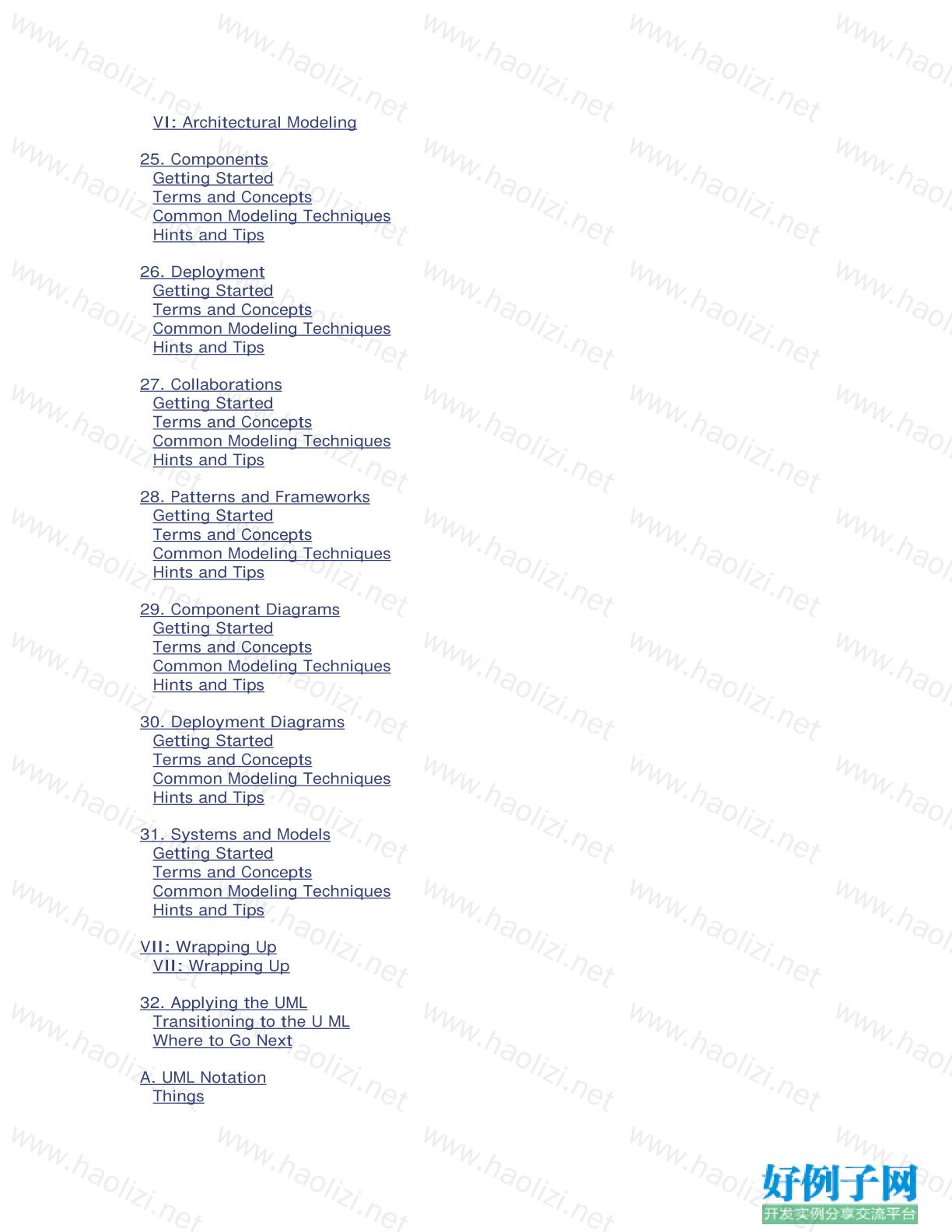
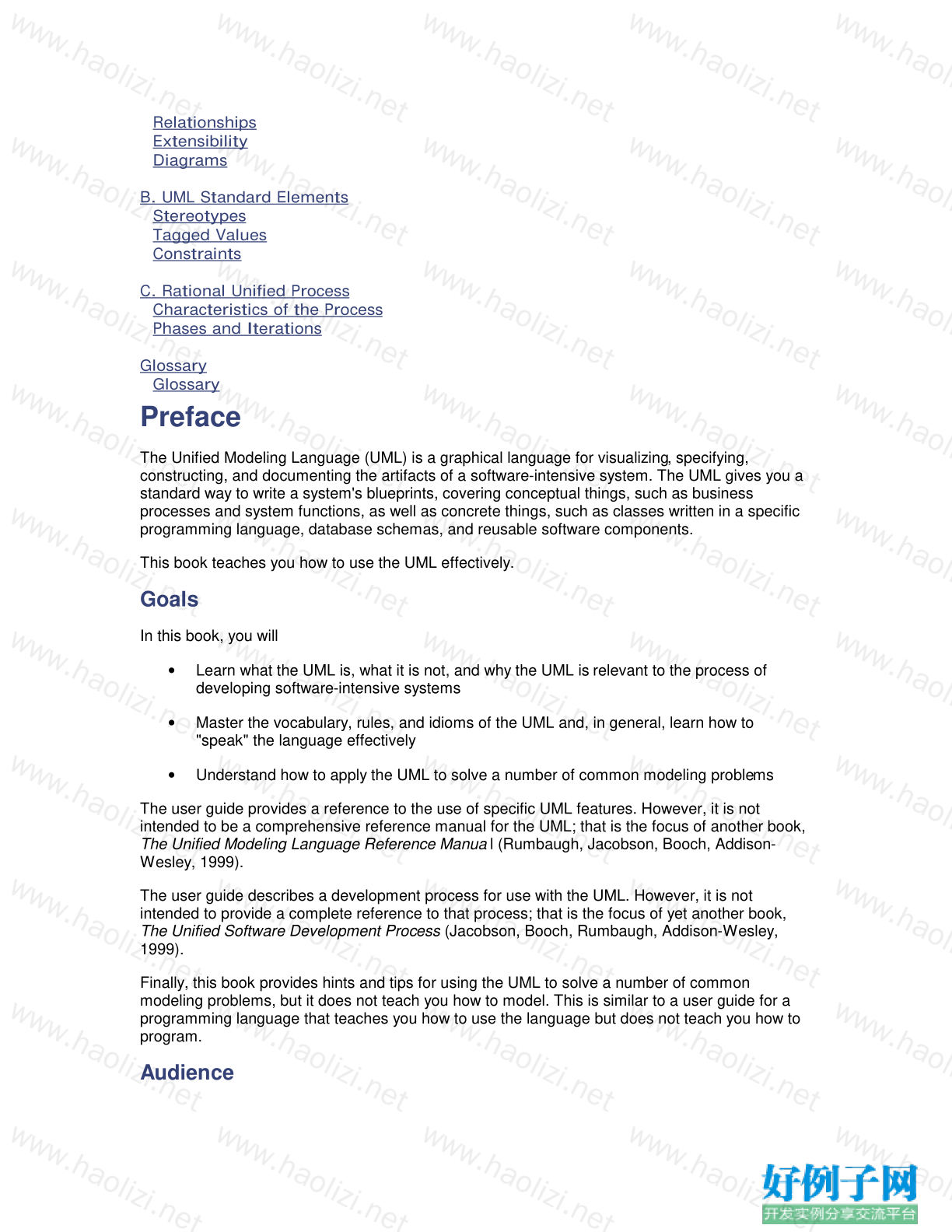
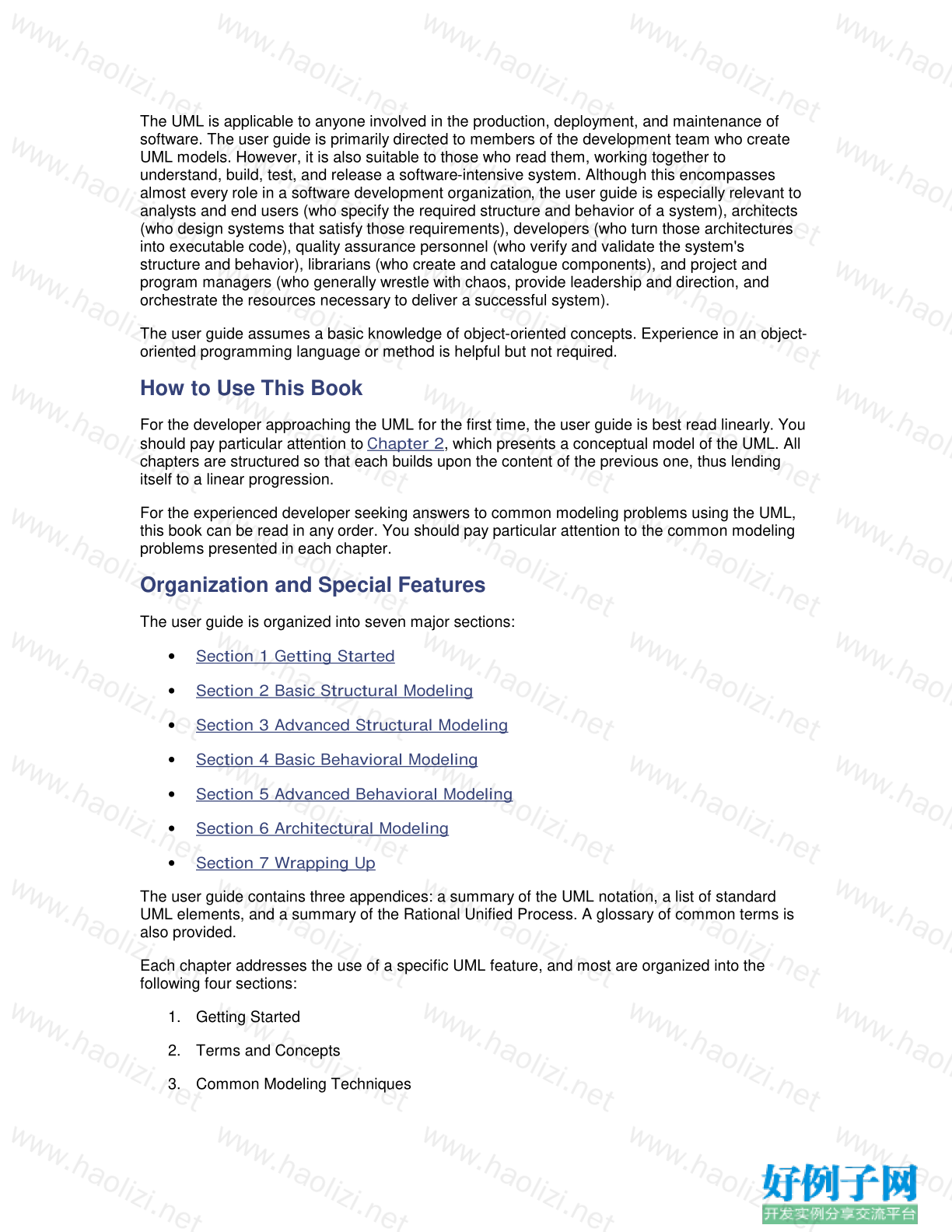

【核心代码】
Credits
Executive Editor:
J. Carter Shanklin
Editorial Assistant:
Meg Tangirala
Copy Editor:
Arlene Richman
Cover Designer:
Simone R. Payment
Project Editor:
Krysia Bebick
Production Manager:
Sarah Weaver
Compositor:
Grady Booch
To my loving wife, Jan, and my goddaughter, Elyse, both of whom
make me whole.
Grady Booch
Unified Modeling Language User Guide, The
Preface
Goals
Audience
How to Use This Book
Organization and Special Features
A Brief History of the UML
Acknowledgments
For More Information
I: Getting Started
I: Getting Started
1. Why We Model
The Importance of Modeling
Principles of Modeling
Object-Oriented Modeling
2. Introducing the UML
An Overview of the UML
A Conceptual Model of the UML
Architecture
Software Development Life Cycle
3. Hello, World!
Key Abstractions
Mechanisms
Components
II: Basic Structural Modeling
II: Basic Structural Modeling
4. Classes
Getting Started
Terms and Concepts
Common Modeling Techniques
Hints and Tips
5. Relationships
Getting Started
Terms and Concepts
Common Modeling Techniques
Hints and Tips
6. Common Mechanisms
Getting Started
Terms and Concepts
Common Modeling Techniques
Hints and Tips
7. Diagrams
Getting Started
Terms and Concepts
Common Modeling Techniques
Hints and Tips
8. Class Diagrams
Getting Started
Terms and Concepts
Common Modeling Techniques
Hints and Tips
III: Advanced Structural Modeling
III: Advanced Structural Modeling
9. Advanced Classes
Getting Started
Terms and Concepts
Common Modeling Techniques
Hints and Tips
10. Advanced Relationships
Getting Started
Terms and Concepts
Common Modeling Techniques
Hints and Tips
11. Interfaces, Types, and Roles
Getting Started
Terms and Concepts
Common Modeling Techniques
Hints and Tips
12. Packages
Getting Started
Terms and Concepts
Common Modeling Techniques
Hints and Tips
13. Instances
Getting Started
Terms and Concepts
Common Modeling Techniques
Hints and Tips
14. Object Diagrams
Getting Started
Terms and Concepts
Common Modeling Techniques
Hints and Tips
IV: Basic Behavioral Modeling
IV: Basic Behavioral Modeling
15. Interactions
Getting Started
Terms and Concepts
Common Modeling Techniques
Hints and Tips
16. Use Cases
Getting Started
Terms and Concepts
Common Modeling Techniques
Hints and Tips
17. Use Case Diagrams
Getting Started
Terms and Concepts
Common Modeling Techniques
Hints and Tips
18. Interaction Diagrams
Getting Started
Terms and Concepts
Common Modeling Techniques
Hints and Tips
19. Activity Diagrams
Getting Started
Terms and Concepts
Common Modeling Techniques
Hints and Tips
V: Advanced Behavioral Modeling
V: Advanced Behavioral Modeling
20. Events and Signals
Getting Started
Terms and Concepts
Common Modeling Techniques
Hints and Tips
21. State Machines
Getting Started
Terms and Concepts
Common Modeling Techniques
Hints and Tips
22. Processes and Threads
Getting Started
Terms and Concepts
Common Modeling Techniques
Hints and Tips
23. Time and Space
Getting Started
Terms and Concepts
Common Modeling Techniques
Hints and Tips
24. Statechart Diagrams
Getting Started
Terms and Concepts
Common Modeling Technique
Hints and Tips
VI: Architectural Modeling
VI: Architectural Modeling
25. Components
Getting Started
Terms and Concepts
Common Modeling Techniques
Hints and Tips
26. Deployment
Getting Started
Terms and Concepts
Common Modeling Techniques
Hints and Tips
27. Collaborations
Getting Started
Terms and Concepts
Common Modeling Techniques
Hints and Tips
28. Patterns and Frameworks
Getting Started
Terms and Concepts
Common Modeling Techniques
Hints and Tips
29. Component Diagrams
Getting Started
Terms and Concepts
Common Modeling Techniques
Hints and Tips
30. Deployment Diagrams
Getting Started
Terms and Concepts
Common Modeling Techniques
Hints and Tips
31. Systems and Models
Getting Started
Terms and Concepts
Common Modeling Techniques
Hints and Tips
VII: Wrapping Up
VII: Wrapping Up
32. Applying the UML
Transitioning to the U ML
Where to Go Next
A. UML Notation
Things
Relationships
Extensibility
Diagrams
B. UML Standard Elements
Stereotypes
Tagged Values
Constraints
C. Rational Unified Process
Characteristics of the Process
Phases and Iterations
Glossary
Glossary
小贴士
感谢您为本站写下的评论,您的评论对其它用户来说具有重要的参考价值,所以请认真填写。
- 类似“顶”、“沙发”之类没有营养的文字,对勤劳贡献的楼主来说是令人沮丧的反馈信息。
- 相信您也不想看到一排文字/表情墙,所以请不要反馈意义不大的重复字符,也请尽量不要纯表情的回复。
- 提问之前请再仔细看一遍楼主的说明,或许是您遗漏了。
- 请勿到处挖坑绊人、招贴广告。既占空间让人厌烦,又没人会搭理,于人于己都无利。
关于好例子网
本站旨在为广大IT学习爱好者提供一个非营利性互相学习交流分享平台。本站所有资源都可以被免费获取学习研究。本站资源来自网友分享,对搜索内容的合法性不具有预见性、识别性、控制性,仅供学习研究,请务必在下载后24小时内给予删除,不得用于其他任何用途,否则后果自负。基于互联网的特殊性,平台无法对用户传输的作品、信息、内容的权属或合法性、安全性、合规性、真实性、科学性、完整权、有效性等进行实质审查;无论平台是否已进行审查,用户均应自行承担因其传输的作品、信息、内容而可能或已经产生的侵权或权属纠纷等法律责任。本站所有资源不代表本站的观点或立场,基于网友分享,根据中国法律《信息网络传播权保护条例》第二十二与二十三条之规定,若资源存在侵权或相关问题请联系本站客服人员,点此联系我们。关于更多版权及免责申明参见 版权及免责申明



网友评论
我要评论